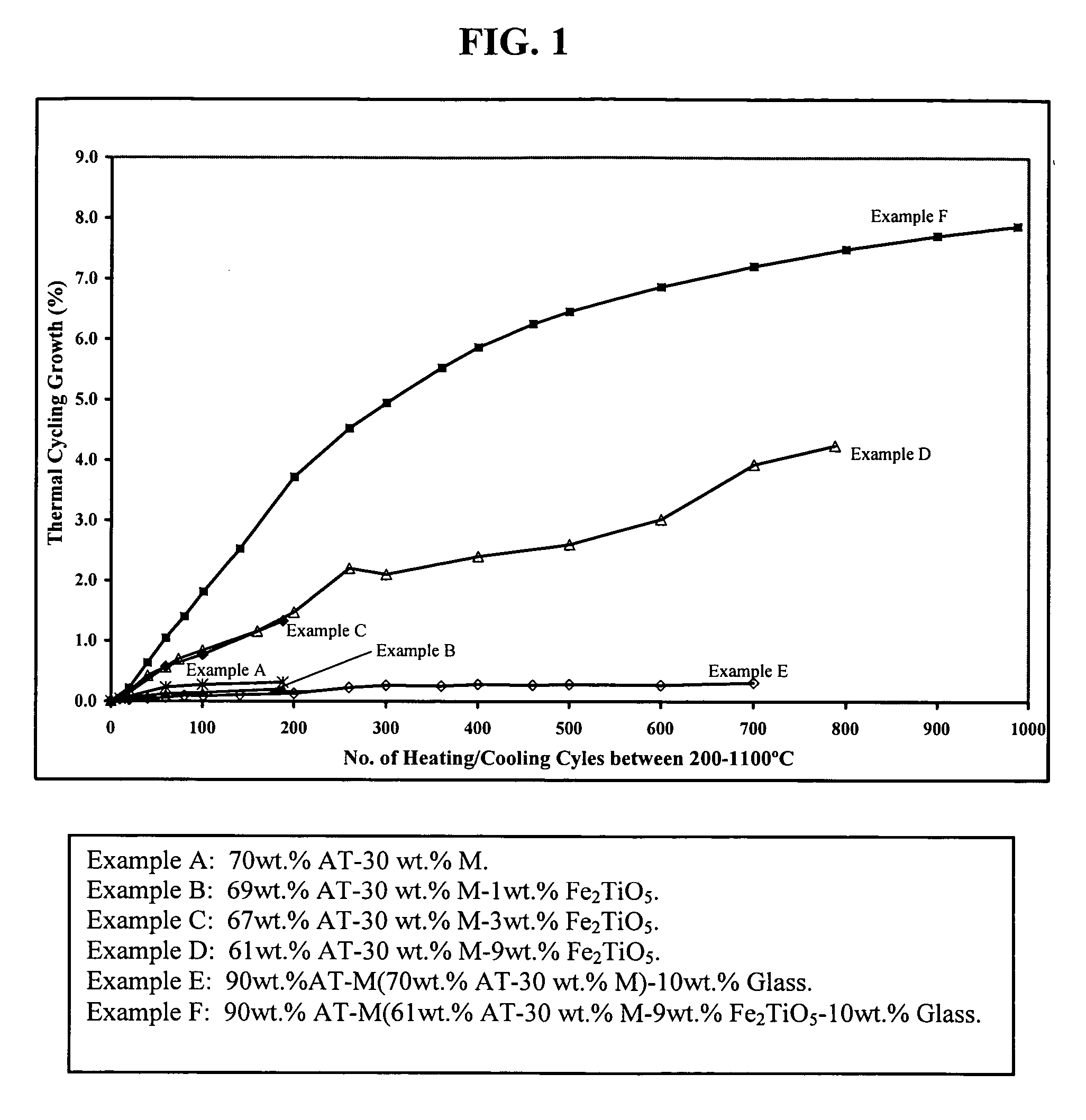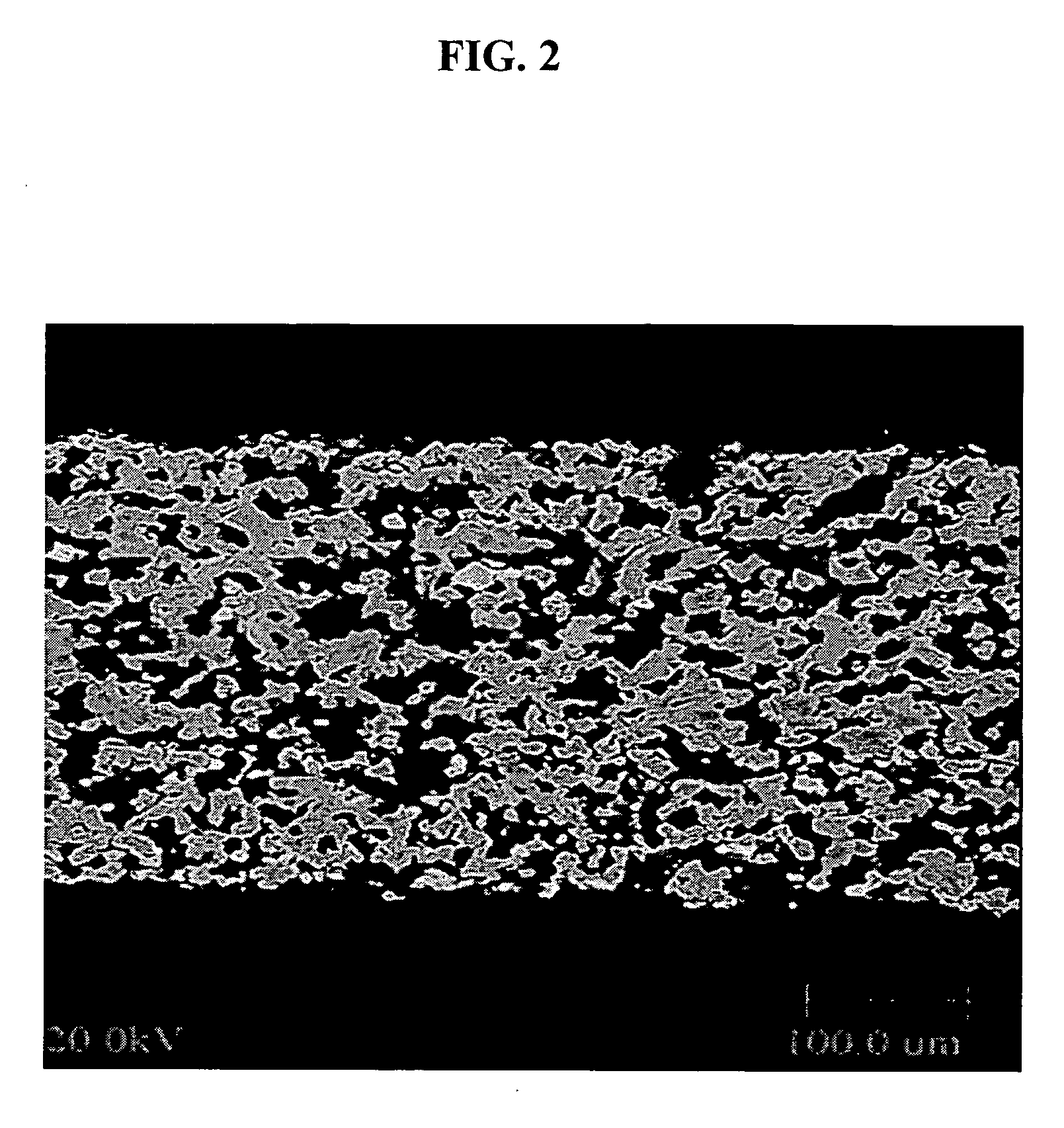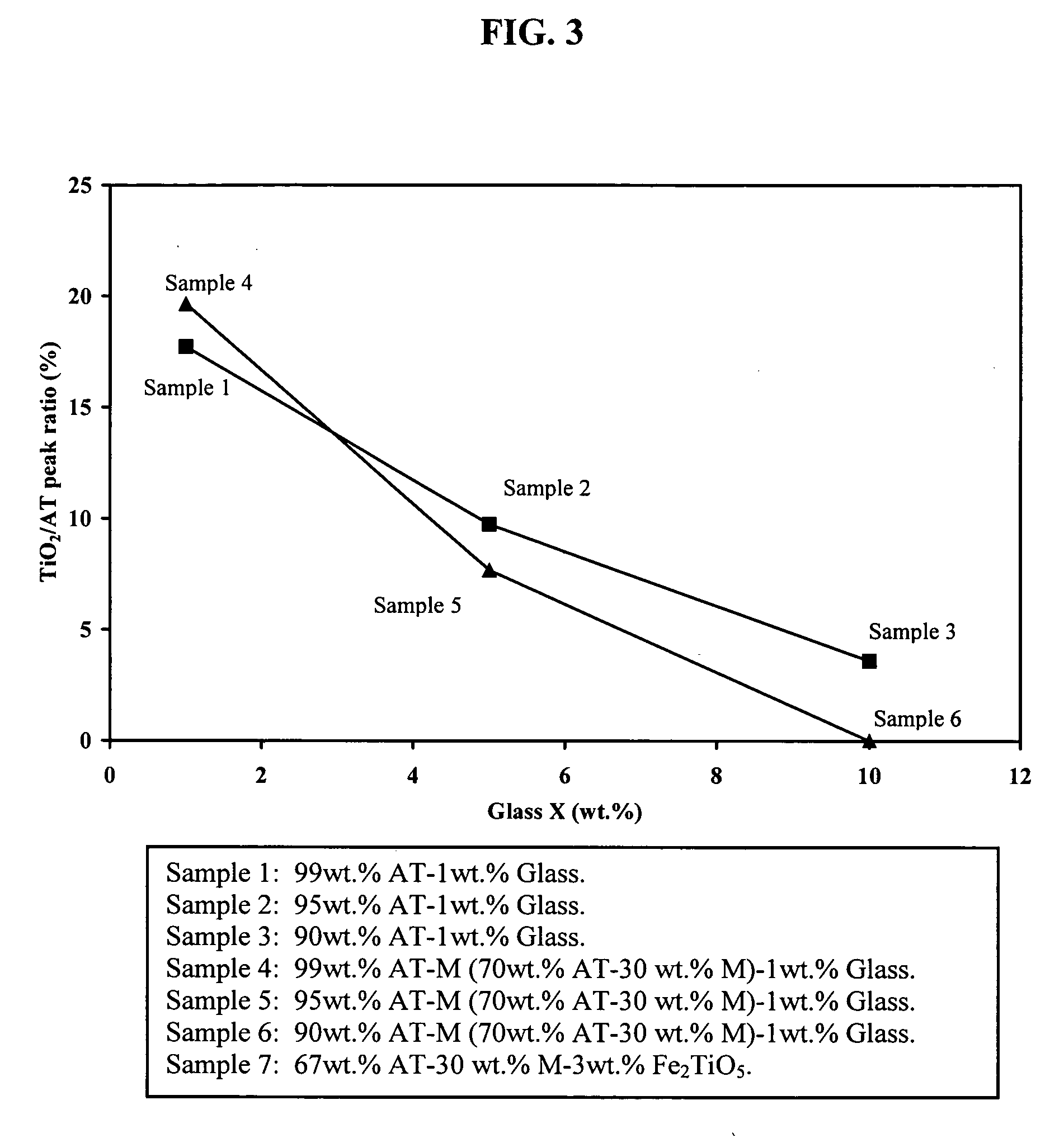Ceramic body based on aluminum titanate and including a glass phase
- Summary
- Abstract
- Description
- Claims
- Application Information
AI Technical Summary
Benefits of technology
Problems solved by technology
Method used
Image
Examples
examples
[0035] Table I provides the parts and proportions for samples 1-7. Samples 1-6 have a glass phase (Glass X), the composition of which is provided in Table II. The glass is melted at 1600° C. according to known techniques and then ground to a powder (−325 mesh).
[0036] The dry ingredients including the inorganic raw materials, powdered glass and methylcellulose binder are dry mixed in a muller. The oleic acid and about 20 wt. % water are then slowly added during continuous mixing to provide homogenization and plasticization.
[0037] The plasticized mixture is extruded through a honeycomb die to form honeycomb bodies having approximately 200 cells / in2 and a wall thickness of about 0.016 inch. The bodies thus formed are cut to desired lengths, and heated in an oven at 85° C. until dry. The samples are then fired in an electric furnace over various temperature intervals ranging from 1350-1650° C. with a hold time of 6-10 hours, and cooled by shutting off power to the furnace.
[0038] The ...
PUM
| Property | Measurement | Unit |
|---|---|---|
| Temperature | aaaaa | aaaaa |
| Temperature | aaaaa | aaaaa |
| Temperature | aaaaa | aaaaa |
Abstract
Description
Claims
Application Information
 Login to View More
Login to View More - Generate Ideas
- Intellectual Property
- Life Sciences
- Materials
- Tech Scout
- Unparalleled Data Quality
- Higher Quality Content
- 60% Fewer Hallucinations
Browse by: Latest US Patents, China's latest patents, Technical Efficacy Thesaurus, Application Domain, Technology Topic, Popular Technical Reports.
© 2025 PatSnap. All rights reserved.Legal|Privacy policy|Modern Slavery Act Transparency Statement|Sitemap|About US| Contact US: help@patsnap.com



